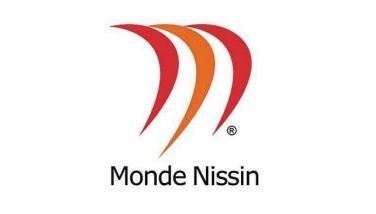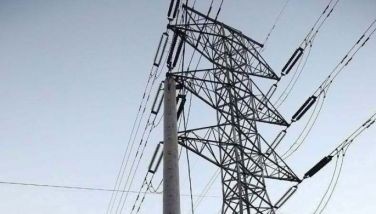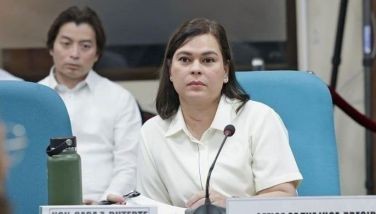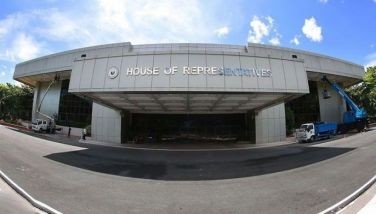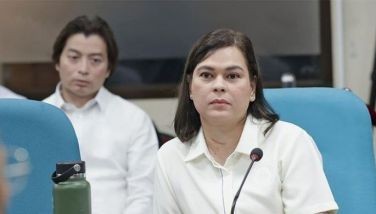Helping you protect your deposits

A few years back, the Philippine Deposit Insurance Corp. (PDIC) raised the amount of insured deposits to P500,000, much to the relief of many Filipino depositors. That move certainly eased the anxiety and concern of the depositors, but it also put a heavy burden on PDIC.
In recent years, we have seen the closure of quite a few banks, many of them rural banks and savings banks, and commiserated with the thousands of depositors left holding worthless bank books after queuing in line for days outside the banks’ premises, their hopes of withdrawing their savings dimming every day. If your deposits are less than Php500,000, then you have a reasonable chance of recovering your money after PDIC’s Receivership Division is through with the voluminous paper work. Gleaning through thousands of accounts is no mean feat, and having irate depositors pounding daily on your door or burning the telephone lines to follow up their claims is also not exactly one’s idea of a great day in the office.
In 2010, the Philippine Deposit Insurance Corp. paid out P3.3 billion to settle claims. 2011, this amount ballooned to P11.6 billion which is what PDIC spent to repay insured deposits. That was when we had some celebrated cases of bank mismanagement, anomalies and fraud. Topping the list then was the Legacy Group of Companies which involved several banking units and insurance firms all belonging to the umbrella corporation of Legacy. Since then, however, the government insurance agency has paid off some 98 percent of the claims of Legacy depositors. Of course, these claims had a maximum limit of P500,000, and other depositors who patiently and frugally set aside a portion of their income for years to save up to more than this prescribed limit could only gnash their teeth in frustration. Anything over P500,000 is a foregone conclusion, gone with the wind.
Other celebrated cases that the PDIC is handling are the GMA Rural Bank and Banco Filipino. For the former, PDIC has paid off 97 percent of the claims, according to lawyer Nancy Sevilla-Samson who is Vice President of the Receivership and Bank Management Group of the Philippine Deposit Insurance Corporation. For Banco Filipino, they have reportedly paid off 98 percent of the total liabilities. Judging from these figures as given by Ms.Samson, the batting average of PDIC in claims settlement is nothing short of remarkable and affirms our faith in this agency.
So what happens to a depositor whose savings accounts are over the limit of insured deposits as prescribed by PDIC? According to Ms. Samson, the excess deposits are considered as claims against the assets of the erring bank. When PDIC sets about liquefying the bank’s assets, after paying off the mandatory deposit liability or insured deposits, they prepare a distribution plan from which to base their payment to all the creditors of the bank. This includes all the depositors whose deposits are above the limit of insured deposits. However, the reality of it is that these depositors hardly get anything more than what PDIC forks out. Your accounts are never recovered in full.
After paying off the insured deposits, PDIC also becomes another creditor of the bank seeking recovery of their exposure. Like the other depositors, their recovery depends on the availability of the erring bank’s assets, so it is a fair guess that PDIC’s chances are very slim. According to Ms. Samson, per actual figures, the recovery of what PDIC has actually forked out in settlement claims is only around 20 percent.
That they would even get 20 percent back is surprising. It is safe to imagine that even before they get to the stage where they would be officially put under receivership by the Bangko Sentral and the PDIC, these banks would have used every trick in the book to safeguard the owners’ and directors’ personal stakes/deposits in the banks.
Under Section 30 of Republic Act 7653, otherwise known as the New Central Bank Act, there are three grounds on which they base their decision to place a particular bank under receivership. One is when the bank’s assets are less than their liabilities; two: when the bank is unable to pay the liabilities to the depositors as they fall due; and third is when the bank is deemed to fall short of the safe banking practices as prescribed by the Bangko Sentral for which the Bangko Sentral itself will no longer authorize it to operate and declare it under receivership.
From all indications, the Legacy Group is a blatant example of what a bank should not be—on all grounds, it deserves to be suspended and placed under receivership, though from the looks of it, the depositors will not get anything more than what the PDIC has given them. The Legacy’s assets have been dissipated, and the Legacy Group is nothing more than a shell. Of course, it is also safe to assume that the PDIC itself will not recover its full exposure, having paid off 98 percent of the Legacy depositors insured deposits.
Since 1998, PDIC has filed a total of 98 criminal cases against erring banks, and of these, almost 50 percent have been resolved at the level of the Department of Justice; the rest are under various stages of prosecution at various courts.
So what can a simple, frugal depositor in the rural areas do to protect himself. Many of the banks that have been ordered closed by the Bangko Sentral are small rural banks found in far-flung areas where the folks have no access to the more stable commercial, thrift or savings banks. Much of the rural banks in the country are family-owned, and as such are fully dependent on family money. Unlike the bigger commercial and thrift banks, they are not allowed by the Bangko Sentral to accept foreign equity, which more or less means that they will always be relegated to being a small bank in a tiny far-flung community. The Rural Bankers Association of the Philippines (RBAP) has been pushing for the legislation which will allow them equal opportunities as far as foreign equity is concerned.
Meanwhile, PDIC has this “Be A Wise Saver†Campaign where they advise depositors to: 1 Choose their bank well and know the owners behind it; 2 Understand the bank products well and be well informed as to the service fees; 3 Keep their bank records updated; and 4 Transact only with authorized bank representatives inside the bank’s premises, never outside.
Mabuhay!!! Be proud to be a Filipino.
For comments: (email) businessleisure-star@stv.com.ph
- Latest
- Trending






















